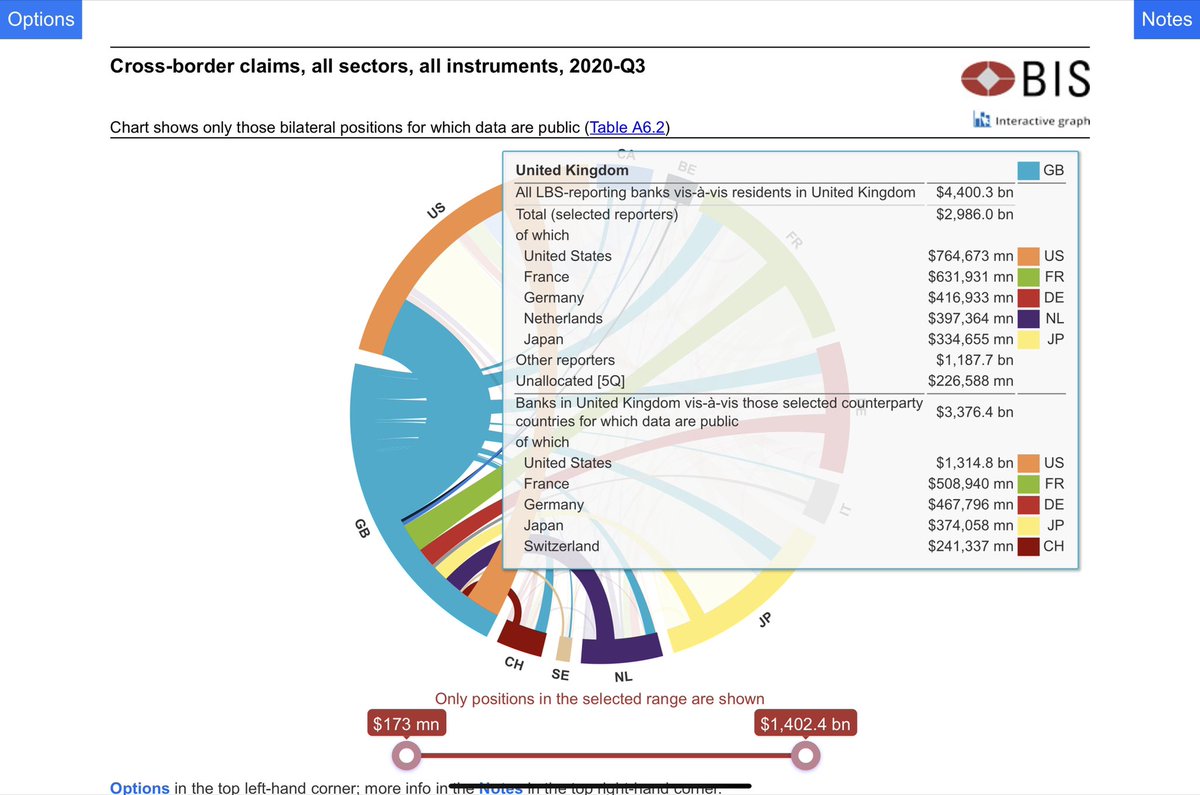
Good observations by @EtraAlex
Two further points to bear in mind are (1) counterparty sector (official or private financial, private non-financial) and (2) the distinction between location and nationality
For this, the following BIS data would shed more light
(continued)
Two further points to bear in mind are (1) counterparty sector (official or private financial, private non-financial) and (2) the distinction between location and nationality
For this, the following BIS data would shed more light
(continued)
https://twitter.com/EtraAlex/status/1462173607883382785
First, regarding the counterparty sector, the 2020:Q1 surge in cross-border banking flows stands out
Normally, we would expect a sharp retrenchment during stress episodes, but there was instead a surge, as discussed in this #BIS_Bulletin
bis.org/publ/bisbull34…
Normally, we would expect a sharp retrenchment during stress episodes, but there was instead a surge, as discussed in this #BIS_Bulletin
bis.org/publ/bisbull34…

A closer look reveals that most of the flows were the recycling of dollar funding through interoffice flows as part of a "Grand Overdraft"; this explains the surge and the subsequent unwinding 

To get at these issues, one needs to go beyond the balance of payment data that @EtraAlex uses
Check out our Dreamcatcher data visualisation tool for our locational banking statistics, which makes everything very easy and intuitive
bis.org/statistics/sta…
Check out our Dreamcatcher data visualisation tool for our locational banking statistics, which makes everything very easy and intuitive
bis.org/statistics/sta…
Second, it's important to distinguish cross-border flows (about the location of the activity) from the *nationality* of the flows (whether they're within the same firm)
The previous bulge in 2014-15 is mostly about latter. This is a useful primer:
bis.org/publ/work524.h…
The previous bulge in 2014-15 is mostly about latter. This is a useful primer:
bis.org/publ/work524.h…
Perhaps @EtraAlex has in mind the chart below (page 20 in the primer linked above), where gross flows mask the net balances
But the analogy is perhaps not that good for the case he mentions - the business model is very different for the banks concerned
But the analogy is perhaps not that good for the case he mentions - the business model is very different for the banks concerned

My press briefing remarks for the March 2016 BIS Quarterly Review might be more relevant
bis.org/publ/qtrpdf/r_…
bis.org/publ/qtrpdf/r_…
See also this BIS Quarterly Review piece from September 2020 that maps the flows in the early stages of the pandemic
bis.org/publ/qtrpdf/r_…
bis.org/publ/qtrpdf/r_…
In any case, do check out the BIS statistics resources here, where everything is laid out in very intuitive terms:
bis.org/statistics/abo…
bis.org/statistics/abo…
If you haven't seen it already, this introductory video takes you through our banking statistics step by step
• • •
Missing some Tweet in this thread? You can try to
force a refresh









